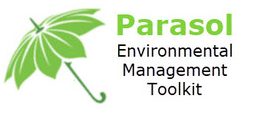Environmental management is vital for organizations to minimize their ecological footprint and contribute to sustainable development. To facilitate effective environmental management, the use of an Environmental Management Toolkit can provide valuable resources, strategies, and tools. In this blog post, we will introduce the concept of an Environmental Management Toolkit and discuss its significance in empowering organizations to adopt sustainable practices.
Understanding the Environmental Management Toolkit
This blog will provide an overview of what an Environmental Management Toolkit entails. It will explain that such a toolkit is a comprehensive resource that incorporates guidelines, best practices, templates, and tools to assist organizations in assessing, planning, implementing, and monitoring their environmental initiatives. The toolkit encompasses various aspects, such as environmental regulations, resource management, waste reduction, energy efficiency, and sustainable procurement.
Assessing Environmental Impact
One of the key components of an Environmental Management Toolkit is conducting an environmental impact assessment. This blog post will explore the importance of assessing an organization’s environmental footprint, including its carbon emissions, energy consumption, water usage, waste generation, and pollutant releases. It will highlight how the toolkit provides methodologies and tools to conduct thorough assessments and identify areas for improvement.
Developing Environmental Policies and Procedures
To effectively manage environmental aspects, organizations need to establish robust policies and procedures. This blog will discuss how an Environmental Management Toolkit offers guidance on developing environmental policies that align with regulatory requirements and sustainability objectives. It will emphasize the significance of clear procedures for implementing and monitoring these policies, ensuring compliance and continuous improvement.
Implementing Sustainable Practices
The toolkit plays a crucial role in guiding organizations in the implementation of sustainable practices. This blog post will explore various strategies and tools provided in the toolkit to support sustainable resource management, waste reduction, energy efficiency, water conservation, and biodiversity preservation. It will discuss how the toolkit enables organizations to set targets, develop action plans, and track progress towards achieving sustainability goals.
Monitoring and Reporting
Effective monitoring and reporting are essential for evaluating the success of environmental management efforts. This blog will highlight the monitoring and reporting tools available in the Environmental Management Toolkit, enabling organizations to track their environmental performance, measure key indicators, and generate reports. It will emphasize the importance of transparent reporting for internal stakeholders, regulatory compliance, and enhancing the organization’s reputation.
Conclusion
An Environmental Management Toolkit serves as a valuable resource for organizations seeking to adopt sustainable practices and minimize their environmental impact. From assessing environmental footprints to developing policies, implementing sustainable practices, and monitoring progress, the toolkit empowers organizations to manage their environmental responsibilities effectively. By utilizing the resources and tools provided in the toolkit, organizations can work towards achieving sustainability goals and contributing to a greener and more sustainable future.



